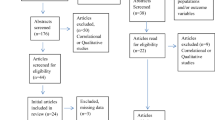Abstract
Anxiety, depression, and even suicidal ideation are becoming the most common mental health problems affecting Chinese college students. The present study investigated the prevalence of mental health problems and their predictors in a sample of 1048 Chinese college freshmen from Shanghai. We used following brief screening instruments to measure symptoms of anxiety and depression, as well as self-control and suicidal ideation: the Patient Health Questionnaire (PHQ-9), the Generalized Anxiety Disorder scale (GAD-7), a mental health and mental health knowledge questionnaire (MK), a mental disease-related attitude questionnaire (MA), questionnaires about the knowledge of psychological services and utilities, the Mini International Neuropsychiatric Interview (MINI) Suicide module, the Self-Rated Health Measurement Scale (SFHMS), the Self-Esteem Scale (SES), the Simplified Coping Style Questionnaire (SCQ), and the Perceived Stress Scale-10 (PSS-10). Over half of the students suffered from at least one mental health problem. Approximately 65.55% of freshmen had depression, and 46.85% had anxiety. Minority status, low family income, and religious belief were significantly associated with current mental health problems. These findings indicate that mental disorders are highly prevalent among the freshman student population. The prevalence of such mental disorders was greater than that of the general population, and the majority of students with mental health problems require treatment.
Similar content being viewed by others
References
Reetz DR, Barr V, Krylowicz B. The Association for University and College Counseling Center Directors Annual Survey. Available: http://files.cmcglobal.com/AUCCC D_Monograph_Public_2013.pdf. Accessed: June 2014
Wong JG, Cheung EP, Chan KK, et al. Web-based survey of depression, anxiety and stress in first-year tertiary education students in Hong Kong. Aust N Z J Psychiatry, 2006,40(9):777–782
Chen L, Wang L, Qiu XH, et al. Depression among Chinese university students: prevalence and socio-demographic correlates. PLoS One, 2013,8(3):e58379
Crystal DS, Chen C, Fuligni AJ, et al. Psychological maladjustment and academic achievement: a cross-cultural study of Japanese, Chinese, and American high school students. Child Dev, 1994,65(3):738–753
Yen S, Robins CJ, Lin N. A cross-cultural comparison of depressive symptom manifestation: China and the United States. J Consult Clin Psychol, 2000,68(6):993–999
Kessler RC, Berglund P, Demler O, et al. Lifetime prevalence and age-of-onset distributions of DSM-IV disorders in the National Comorbidity Survey Replication. Arch Gen Psychiatry, 2005,62(6):593–602
Liu J, Ma H, He YL, et al. Mental health system in China: history, recent service reform and future challenges. World Psychiatry, 2011,10(3):210–216
Schwarzer R, Jerusalem M. Generalized Self-Efficacy Scale. In: Weinman J, Wright S, Johnston M, editors. Measures in Health Psychology: A User’s Portfolio. Windsor: NFER-NELSON, 1995:35–37.
Zhang ZJ. Behavioral medicine inventory manual. Chin J Behav Med Sci (Chinese), 2001,special issue
Cohen S, Kamarck T, Mermelstein R. A global measure of perceived stress. J Health Soc Behav, 1983,24(4):385–396.
Sawatzky RG, Ratner PA, Richardson CG, et al. Stress and depression in students: the mediating role of stress management self-efficacy. Nurs Res, 2012,61(1):13–21
Dyrbye LN, Schwartz A, Downing SM, et al. Efficacy of a brief screening tool to identify medical students in distress. Acad Med, 2011,86(7):907–914
Tosevski DL, Milovancevic MP, Gajic SD. Personality and psychopathology of university students. Curr Opin Psychiatry, 2010,23(1):48–52
Constantine MG, Okazaki S, Utsey SO. Self-concealment, social self-efficacy, acculturative stress, and depression in African, Asian, and Latin American international college students. Am J Orthopsychiatry, 2004,74(3):230–241
Sisask M, Värnik A, Lves K, et al. Is religiosity a protective factor against attempted suicide: a cross-cultural casecontrol study. Arch Suicide Res, 2010,14(1):44–55
Schieman S, Bierman A, Ellison CG. Religion and mental health. In: Aneshensel CS, Phelan JC, Bierman A, editors. Handbook of the Sociology of Mental Health. New York: Springer, 2013:457–478.
Bonelli R, Dew RE, Koenig HG, et al. Religious and spiritual factors in depression: review and integration of the research. Depress Res Treat, 2012,2012:962860
Stack S, Kposowa AJ. Religion and suicide acceptability: a cross-national analysis. J Sci Study Relig, 2011,50(2):289–306
Torgler B, Schaltegger C. Suicide and religion: new evidence on the differences between Protestantism and Catholicism. J Sci Study Relig, 2014,53(2):316–340
Butler AC. Poverty and adolescent depressive symptoms. Am J Orthopsychiatry, 2014,84(1):82–94
Tracy M, Zimmerman FJ, Galea S, et al. What explains the relation between family poverty and childhood depressive symptoms? J Psychiatr Res, 2008,42(14):1163–1175
Lucas-Thompson RG, Hostinar CE. Family income and appraisals of parental conflict as predictors of psychological adjustment and diurnal cortisol in emerging adulthood. J FamPsychol, 2013,27(5):784–794
Wang X, Wang X, Hong MA. Manual of Mental Health Assessment Scale (revised edition) (Chinese). Beijing: Chin Mental Health Magazine, 1999:191–196.
Author information
Authors and Affiliations
Corresponding author
Rights and permissions
About this article
Cite this article
Lu, W., Bian, Q., Song, Yy. et al. Prevalence and related risk factors of anxiety and depression among Chinese college freshmen. J. Huazhong Univ. Sci. Technol. [Med. Sci.] 35, 815–822 (2015). https://doi.org/10.1007/s11596-015-1512-4
Received:
Revised:
Published:
Issue Date:
DOI: https://doi.org/10.1007/s11596-015-1512-4




